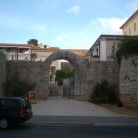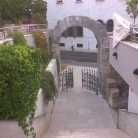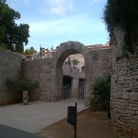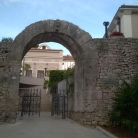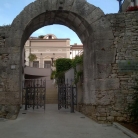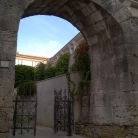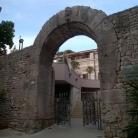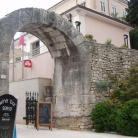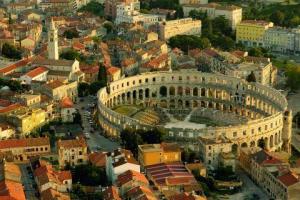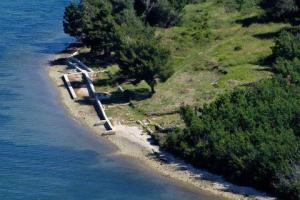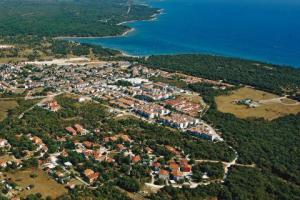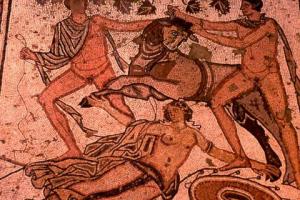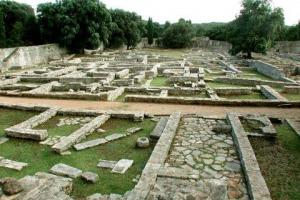The Gate of Hercules
The Gate of Hercules in Pula stands between two, most probably medieval towers. Architecturally modest, it is built of uncarved stone blocks at the top of which, although hardly recognizable, is a carving of the head of Hercules with visible beard, curly hair and a club. It might have been a town's mark as attested by the full name of Roman Pula: Colonia Iulia Pollentia Herculanea.
Unfortunately, a historically very important inscription standing close to the club has been damaged. It contains the names of two Roman officials, Lucius Calpurnius Piso and Gaius Cassius Longinus. According to sources, the first Calpurnius was the father-in-law of Julius Caesar and the father of his wife. The latter was the brother of namesake Cassius Longinus who took part in Caesar's slaying. The Roman Senate had most probably entrusted them the duty to found a Roman colony in the Pula Bay. Pula was founded as a settlement with urban features between 47 and 44 BC.
The Gate of Hercules were not richly decorated. As they did not differ from the exterior coat of the Pula city walls, they were most probably of no big significance during the rule of Rome. Since the upper circular street passed through this gate, the axis of communication was obliquely placed with respect to the direction of the city walls. Just as the twin door, they were dug up in the early 19th century. During the 1930s, they were cleaned and conserved. Today they are used as the entrance to the Italian Community in Pula.
Carrarina 1, HR-52100 Pula-Pola
T: +385 (0)52 218 682












